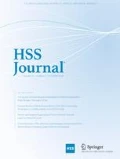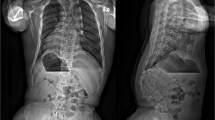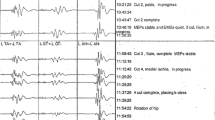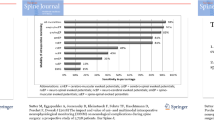Abstract
Background:
Nerve injury during acetabular and pelvic fracture fixation can have devastating consequences for trauma patients already in a compromised situation.
Questions/Purposes:
This study aims to evaluate the efficacy of multimodality intraoperative neurophysiologic monitoring during acetabular and pelvic fracture fixation in identifying emerging iatrogenic nerve injury.
Methods:
Sixty patients were retrospectively identified after surgical fixation following acetabular or pelvic fracture. Neuromonitoring during surgery was performed using three different modalities, transcranial electric motor evoked potential (tceMEP), somatosensory evoked potential (SSEP), and electromyographic (EMG) monitoring. Each modality was evaluated for sensitivity and specificity of detecting an intraoperative nerve injury.
Results:
tceMEP monitoring was found to be 100% sensitive and 86% specific at detecting an impending nerve injury. The sensitivity and specificity of SSEP were 75% and 94%, while EMG sensitivity was unacceptably low at 20% although specificity was 93%.
Conclusions:
Multimodality neuromonitoring of transcranial electric motor and peroneal nerve somatosensory evoked potentials with or without spontaneous EMG monitoring is a safe and effective method for detecting impending nerve injury during acetabular and pelvic surgery.
Similar content being viewed by others
References
Baumgaertner MR, Wegner D, Booke J. SSEP monitoring during pelvic and acetabular fracture surgery. Journal of Orthopaedic Trauma. 1994; 8: 125-133.
Calder HB, Mast J, Johnstone C. Intraoperative evoked potential monitoring in acetabular surgery. Clinical Orthopaedics and Related Research. 1994; 305: 160-167.
Devlin VJ, Schwartz DM. Intraoperative neurophysiologic monitoring during spinal surgery. Journal of the American Academy of Orthopaedic Surgeons. 2007; 15: 549-560.
Eggspuehler A, Sutter MA, Grob D, et al. Multimodal intraoperative monitoring during surgery of spinal deformities in 217 patients. European Spine Journal. 2007; 16: S188-S196.
Eggspuehler A, Sutter MA, Grob D, et al. Multimodal intraoperative monitoring (MIOM) during cervical spine surgical procedures in 246 patients. European Spine Journal. 2007; 16: S209-S215.
Haidukewych GJ, Scaduto J, Herscovici D Jr, et al. Iatrogenic nerve injury in acetabular fracture surgery: a comparison of monitored and unmonitored procedures. Journal of Orthopaedic Trauma. 2002; 16: 297-301.
Helfet DL, Anand N, Malkani AL, et al. Intraoperative monitoring of motor pathways during operative fixation of acute acetabular fractures. Journal of Orthopaedic Trauma. 1997; 11: 2-6.
Helfet D, Koval K, Hissa EA, et al. Intraoperative somatosensory evoked potential monitoring during acute pelvic fracture surgery. Journal of Orthopaedic Trauma. 1995; 9: 28-34.
Hilibrand AS, Schwartz DM, Sethuraman V, et al. Comparison of transcranial electric motor and somatosensory evoked potential monitoring during cervical spine surgery. The Journal of Bone and Joint Surgery American Volume. 2004; 86: 1248-1253.
Kelleher MO, Tan G, Sarjeant R, et al. Predictive value of intraoperative neurophysiological monitoring during cervical spine surgery: a prospective analysis of 1055 consecutive patients. Journal of Neurosurgery: Spine. 2008; 8: 215-221.
Morgan SJ, Jeray KJ, Phieffer LS, et al. Attitudes of orthopaedic trauma surgeons regarding current controversies in the management of pelvic and acetabular fractures. Journal of Orthopaedic Trauma. 2001; 15: 526-532.
Pring ME, Trousdale RT, Cabanela ME, et al. Intraoperative electromyographic monitoring during periacetabular osteotomy. Clinical Orthopaedics and Related Research. 2002; 400: 158-164.
Schwartz DM, Auerbach JD, Dormans JP, et al. Neurophysiologic detection of impending spinal cord injury during surgery for adolescent idiopathic scoliosis: a comparison of transcranial electric motor and somatosensory evoked potential monitoring. The Journal of Bone and Joint Surgery American Volume. 2007; 89: 2440-2449.
Sutherland CJ, Miller DH, Owen JH. Use of spontaneous electromyography during revision and complex total hip arthroplasty. The Journal of Arthroplasty. 1996; 11: 123-233.
Vrahas M, Gordon RG, Mears DC, et al. Intraoperative somatosensory evoked potential monitoring of pelvic and acetabular fractures. Journal of Orthopaedic Trauma. 1992; 6: 50-58.
Disclosures
ᅟ
Conflict of Interest:
Manny Porat, MD; Nitin Goyal, MD; and Zachary Post, MD, have declared that they have no conflict of interest. Fabio Orozco, MD, is a paid consultant for Medtronics and Stryker, outside the work. Alvin Ong, MD, is a paid consultant for Medtronics and Stryker and Smith and Nephew, outside the work.
Human/Animal Rights:
All procedures followed were in accordance with the ethical standards of the responsible committee on human experimentation (institutional and national) and with the Helsinki Declaration of 1975, as revised in 2008 (5).
Informed Consent:
Informed consent was obtained from all patients for being included in the study.
Required Author Forms
Disclosure forms provided by the authors are available with the online version of this article.
Author information
Authors and Affiliations
Corresponding author
Additional information
Level of Evidence: Level IV: Case Series. See levels of evidence for a complete description.
Rights and permissions
About this article
Cite this article
Porat, M., Orozco, F., Goyal, N. et al. Neurophysiologic Monitoring Can Predict Iatrogenic Injury During Acetabular and Pelvic Fracture Fixation. HSS Jrnl 9, 218–222 (2013). https://doi.org/10.1007/s11420-013-9347-7
Received:
Accepted:
Published:
Issue Date:
DOI: https://doi.org/10.1007/s11420-013-9347-7




